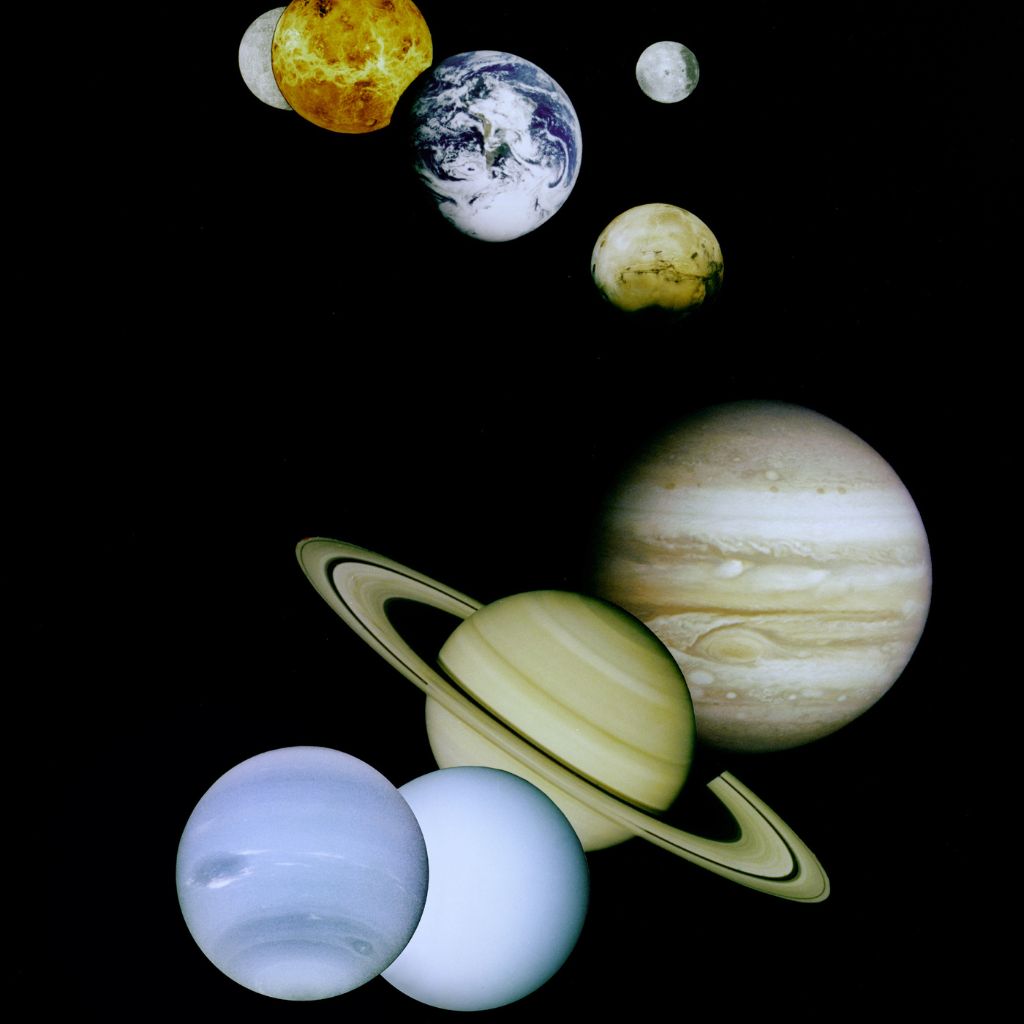This site contains affiliate links to products. I may receive a commission for purchases made through these links.
Ever gazed up at the night sky and wondered about those twinkling dots? I’ll let you in on a secret – they’re not just random, they’re a cosmic ballet of celestial bodies. One of the most fascinating phenomena you can observe is planetary alignment.
Planetary alignments are rare, awe-inspiring events where multiple planets line up in the sky. They’re not just for seasoned astronomers, but beginners like us can enjoy them too. With a little knowledge and the right tools, you’ll soon be spotting these celestial events.
What are Planetary Alignments?
Planetary alignment represents a captivating celestial event that occurs when planets in our solar system align in a straight line or nearly so. As an ardent sky gazer, I find the sight nothing short of remarkable! This pattern can happen either in relation to the Sun, Earth or among themselves. Now it’s not every day that you come across a planetary alignment considering its rarity – an aspect that adds to the thrill. It’s quite an experience to see multiple planets line up, painting an awe-inspiring visual on the vast canvas of the sky.
However, it’s crucial to note that these alignments are apparent and don’t imply any physical proximity between planets. While it may seem so from Earth, they’re still separated by millions of miles in space. A simple yet effective way to think of this concept is visualizing family members standing in a row for a photograph. They line up for the photo, but that doesn’t mean they are touching. Similarly, planetary alignments are an optical phenomenon primarily dependent on our perspective from Earth. The planets continue their individual, elliptical orbits – they just appear to line up from our viewpoint.
Alignments come in several forms, the most common types being ‘conjunction’ and ‘opposition.’ In a conjunction, two or more planets appear extremely close. In opposition, planets appear on opposite sides of the celestial sphere as observed from Earth. This variety of planetary alignments consistently creates a spectrum of exciting possibilities for sky watchers.
So next time you hear about an upcoming planetary alignment, don’t miss the chance! With a bit of planning and the right tools, it’s an earthly spectacle you can appreciate, both for the beauty of the alignment and the excitement of spotting them. After all, it’s not every night you get to witness the fantastic choreography of our solar system in action.
The Significance of Planetary Alignments
Flowing from our discussion on what planetary alignments are, let’s delve into why these cosmic events hold significant interest to astronomers, both professional and amateur alike.
Planetary alignments are more than just spectacular scenes in our night sky. They’re complex celestial events that offer a wealth of knowledge about the inner workings of our solar system. Scientists can utilize these alignments to further their understanding of planetary motion, orbits, and gravitational pull.
For example, during a phenomenon known as syzygy, where three or more celestial bodies align, the gravitational forces can increase, offering an opportunity to study their impact on tides, seismic activity, and other natural phenomena here on Earth.
Planetary alignments also have significance for space missions. Space agencies, such as NASA, use them as windows of opportunity for launching spacecraft. Well-planned missions can utilize the gravitational assistance of planets to conserve fuel, which is known as a “gravity assist” or “slingshot effect.”
Consider an alignment involving Mars and Earth. Spacecraft launched during these alignments can considerably cut travel time and save fuel. It’s the reason why Mars missions are usually scheduled during an opposition, when Mars and Earth are close together in their orbits.
Lastly, on a simpler yet awe-inspiring level, these alignments hold a spectacle of beauty for stargazers. Think of it; the rare sight of planets aligning in a straight line or close to it is marvelous. It’s a natural marvel that never fails to captivate, reminding us of our place in the grand scheme of the universe.
Understanding the science and significance of these alignments enhances our appreciation of these cosmic events. Without a doubt, whether you’re a casual observer, a budding astronomer, or a seasoned researcher, each planetary alignment brings an opportunity to learn and to marvel. So, ensure you’re ready for the next significant alignment. Be it a conjunction or an opposition, these rare celestial events offer a fascinating glimpse into our universe’s intricate symphony.
Tools for Observing Planetary Alignments
As you dive into the fascinating world of planetary alignments, you’ll need the right tools and resources. These essential instruments will enhance your stargazing experience, making it easier to spot and understand these spectacular cosmic events.
An absolute must for any astronomer, amateur or professional, is a quality telescope. A good telescope will allow you to view planets, stars, and other celestial objects with far more detail than the naked eye can see. There’s a wide range of varieties available, from beginner-friendly models to advanced options fitted with computerized star locating systems. Do some research, consider your budget and find the one that best suits your needs. Keep in mind, investing in a good quality telescope can significantly improve your stargazing opportunities.
Astrophotography, or photography of celestial events, is another popular tool amongst astronomers. Using a camera with a high-quality zoom lens, or a smartphone adapter connected to your telescope, you can capture sharp, clear images of the planets during an alignment. This is not only a great way to document your observations but also enables you to share these awe-inspiring images with others.
Apps and software are digital tools that can guide you in your stargazing endeavors. These programs, such as mobile apps like Star Walk or Stellarium, offer sky maps which help identify celestial objects. You can input your location and the software will display the sky as it appears from your point of view, making it easy to locate planets and watch for upcoming alignments.
In addition, there are various books, guides, and online resources dedicated to astronomy and planetary alignments. These materials provide valuable knowledge and insights, offering a deeper understanding of the science behind these events.
After you’ve equipped yourself with these tools, you’ll be well-prepared to witness the wonder of planetary alignments, uncovering the mystique that shrouds the universe, and fostering an appreciation for our place in it. Don’t forget that observing these celestial alignments is a journey of discovery – celebrate each sighting as a step closer to understanding the cosmos.
Tips for Spotting Planetary Alignments
Planetary alignments aren’t everyday sights. They’re rare and require a bit of know-how. But don’t worry, I’ve got you covered. With a keen eye, the right tools, and a dash of patience, you’ll be spotting these celestial spectacles in no time.
First thing: remember that timing is crucial. Planetary alignments occur at specific points in time, and missing that window could mean waiting months or even years for the next one. So, it’s key to keep tabs on upcoming celestial events. Plenty of astronomy websites and apps provide updates about these. Sky Guide and Star Walk 2 are personal favorites. They not only send alerts for upcoming events but also guide your gaze skyward to catch these phenomena in action.
Don’t forget about telescopes. The naked eye can observe some planetary alignments, especially when planets like Mars or Jupiter are involved. But to really enhance your stargazing experience, consider investing in a quality telescope. Brands like Celestron or Orion offer scopes suitable for beginners packed with advanced features.
These tips won’t magically transform you into an ace stargazer overnight. It takes practice, dedication, and a thirst for discovery. And sometimes, even cloud cover can play spoilsport. But don’t let such setbacks deter you. Keep honing your skills and the cosmos will reveal its secrets, one star at a time.
Lastly, be sure to record your findings. Whether through the lens of a camera or your own observations, keeping a log can enhance your understanding of these celestial events. Astrophotography, for instance, is a fantastic way to chronicle your stargazing adventures. It brings the far reaches of space a tad closer to home, and who knows, your captured moments might just inspire others to embark on this cosmic journey of discovery.
Common Misconceptions about Planetary Alignments
Misconceptions can lead to confusing and frustrating experiences for beginners. Let’s debunk some of those myths and set the record straight.
One popular misconception is that planetary alignments are rare galactic events. It’s quite the opposite. In fact, they’re a fairly common occurrence. The planets move in an elliptical orbit around the sun and from our perspective, they will appear to align at some point or another. The thing to note is, these alignments might not always be visible from Earth due to their alignment with the sun.
Another misunderstanding that’s often encountered is that alignments must line up like ducks. Not true! An alignment, in astronomical terms, is a loose concept. It merely refers to a condition where planets are close to one another in the sky but do not necessarily appear in a straight line.
A common belief is that you need expensive and sophisticated equipment to spot these alignments. While telescopes are helpful, you don’t need the Hubble Space telescope to get started. A simple pair of binoculars or even, on some occasions, the naked eye can suffice.
Lastly, many believe that planetary alignments have drastic effects on Earth. Stories of apocalyptic events connected to planetary alignments have weaved themselves into our cultural fabric. But as far as we know, there’s no scientific evidence to support these claims.
So, as you embark on this astronomical adventure, it’s important to open your mind to the realities of the cosmos. Dealing with misconceptions is a part of this journey. As you learn and understand more, your perspective will mature and your appreciation of the night sky will significantly deepen.
Conclusion
So there you have it. Observing planetary alignments isn’t as daunting as it may initially seem. With the right tools and a bit of patience, it’s a fascinating endeavor that’s accessible to all. Remember, timing is key and a reliable telescope or astronomy app can be your best friend in this journey. Don’t get hung up on the idea of perfect alignments or fear the cost of equipment.
The universe isn’t always tidy, and you don’t need to break the bank to enjoy its wonders. Lastly, keep an open mind and don’t forget to learn as you go. Because in the end, it’s the journey of discovery that makes observing planetary alignments truly rewarding.







